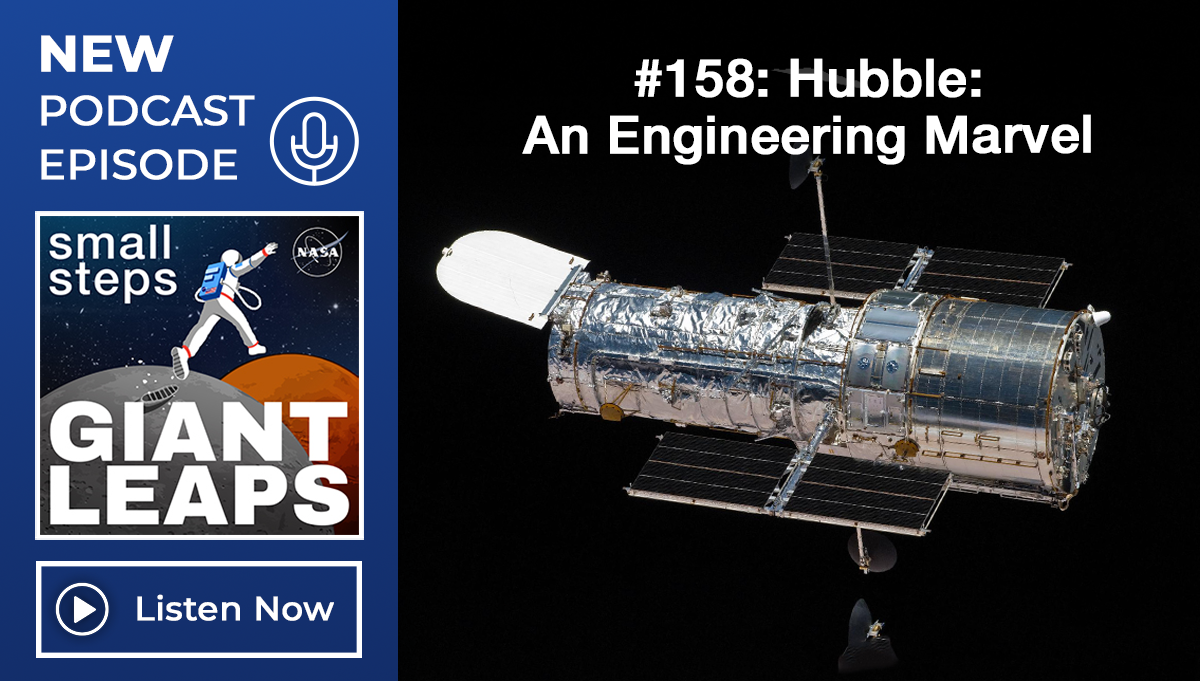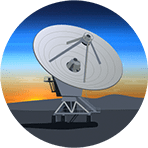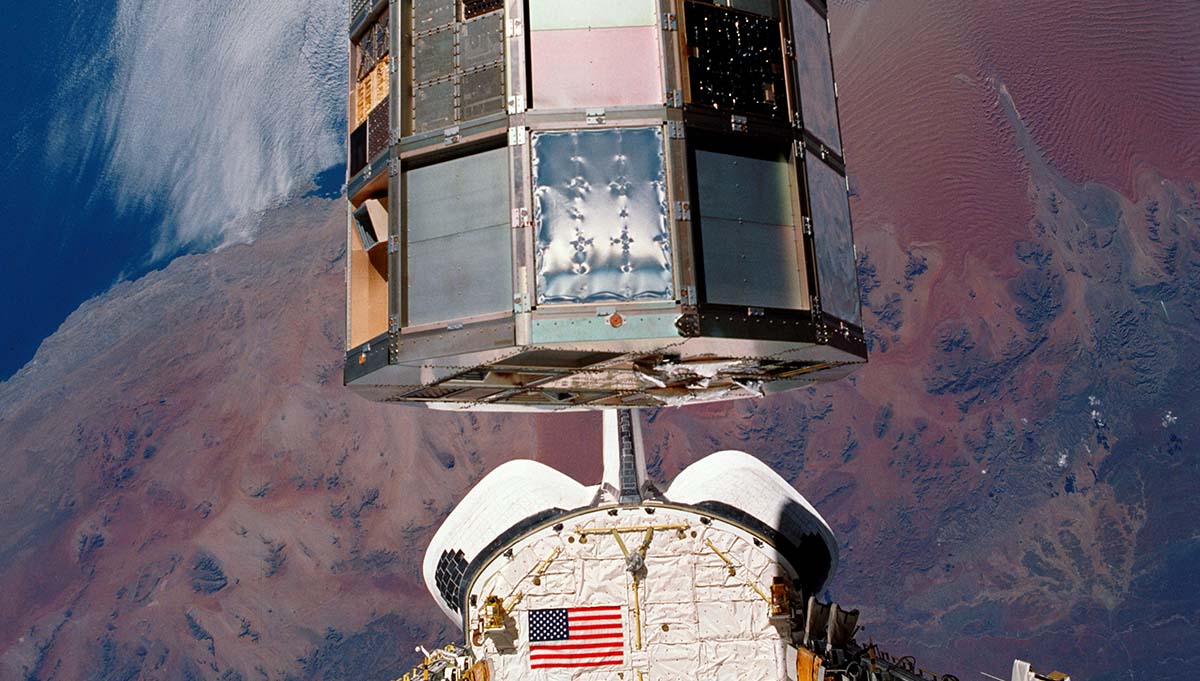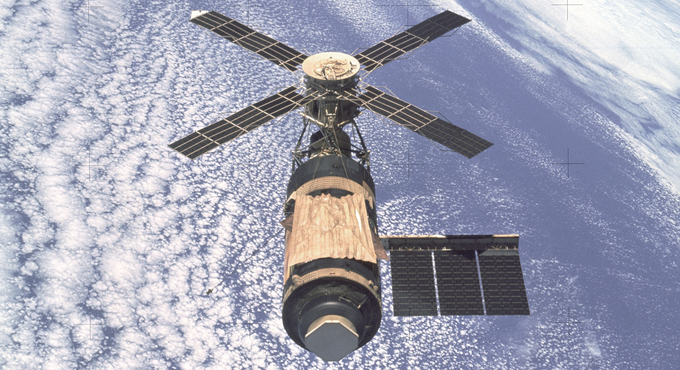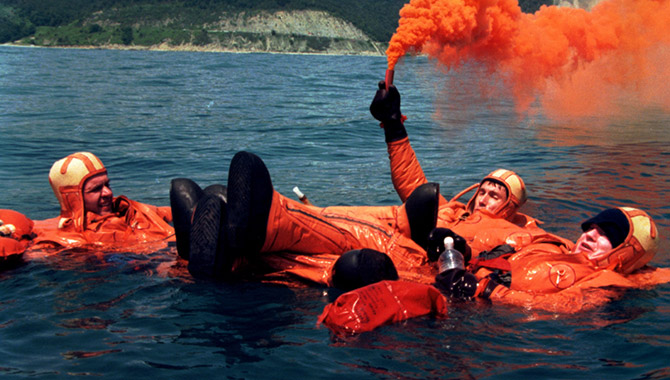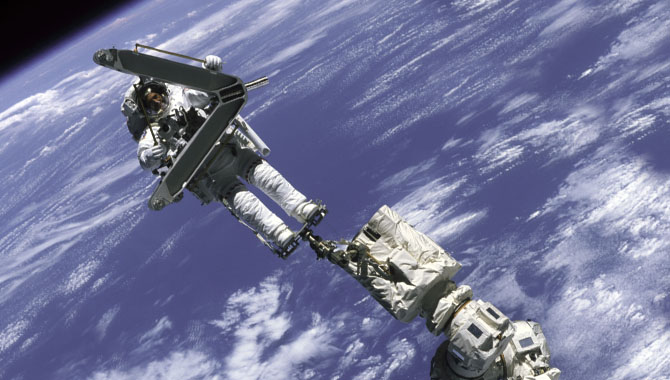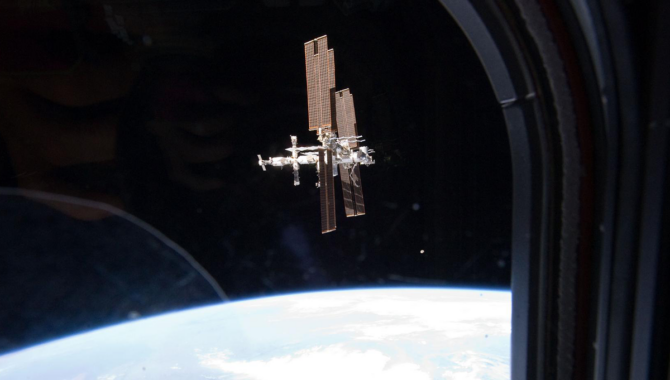
The International Space Station as seen from Atlantis during STS-135, the final mission in the 30-year space shuttle program. Credit: NASA
A small crew and a large cargo of food, supplies, and spare parts mark the last time a space shuttle docked with the International Space Station.
On July 19, 2011, Commander Christopher Ferguson and Pilot Douglas Hurley undocked the Space Shuttle Atlantis from the International Space Station and slowly backed away. The ISS stood in stark contrast against the blackness of space, high above the curvature of the Earth. Its main modules glowed in the sunlight, and its massive solar panels extended far above and below.
The crew of STS-135 wasn’t the first to pause and take it in the spectacular sight. But they knew they would be the last shuttle crew to visit the growing research outpost in low-Earth orbit.
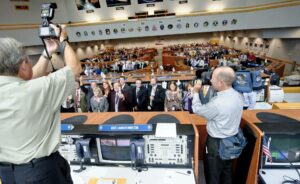
NASA Photographer Kim Shiflett, left, and Videographer Glenn Benson capture a group photo of the team in the Launch Control Center of NASA’s Kennedy Space Center shortly after the space shuttle Atlantis lifted off on STS-135, the final spaceflight of the program. Credit: NASA/Bill Ingalls
To mark the moment, Hurley carefully guided Atlantis in a half loop around the ISS, as the station slowly rotated on orbit. Mission Specialists Sandra Magnus and Rex Walheim captured the historic views out the shuttle windows with digital cameras. Some of the photographs revealed angles that had never been seen before.
“When a generation accomplishes a great thing, it’s got a right to stand back and for just a moment admire and take pride in its work,” Ferguson said. “As the ISS now enters the era of utilization, we’ll never forget the role the space shuttle played in its creation. Like a proud parent, we anticipate great things to follow from the men and women who build, operate and live there. From this unique vantage point, we can see a great thing has been accomplished. Farewell ISS. Make us proud.”
STS-135, the final mission of NASA’s space shuttle program, launched from KSC Launch Complex 39A on July 8, 2011. Officials estimated that about one million spectators packed the beaches, riverbanks, and open spaces along Florida’s Space Coast to watch the shuttle mission begin the thunderous 8-minute ride into space one last time.
NASA’s space shuttles were instrumental in building the ISS. In December 1998, the crew of STS-88 used the robotic arm of Atlantis to join the first two components—the Unity node, supplied by NASA and the Zarya module, which was launched two weeks earlier by Roscosmos, the Russian space agency. With the integration of the Zvezda module in July 2000, and several shuttle missions to add crucial technology, the ISS was ready to house the first 3-person crew in November of that year.
Atlantis, which had carried as many as seven astronauts on previous missions, flew STS-135 with a crew of just four—the smallest shuttle crew since the early 1980s. Because the orbiters Discovery and Endeavour had already been retired, NASA developed a contingency plan if Atlantis had suffered damage during launch that would make it impossible to return to Earth. The crew, fitted with custom Russian Sokol space suits and molded Soyuz seat liners, would return to Earth aboard Soyuz capsules.
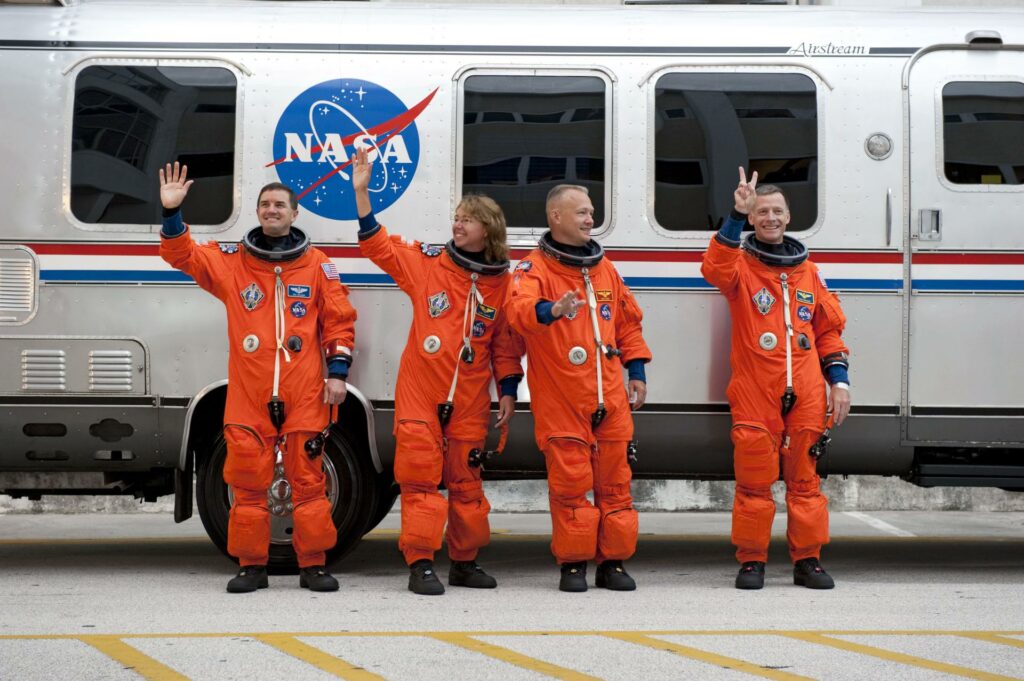
After suiting up, the crew of STS-135 paused to wave to onlookers before heading to the Space Shuttle Atlantis, which was waiting at launch complex 39A. From right are NASA astronauts Chris Ferguson, commander; Doug Hurley, pilot; and Sandy Magnus and Rex Walheim, both mission specialists. Credit: NASA
The reduced crew size enabled the mission to carry a larger payload—9,400 pounds—of supplies and equipment to the ISS. This was important because the first commercial resupply mission was still 15 months away. The supplies were loaded into a 21-foot long, 15-foot diameter Multi-Purpose Logistics Module supplied by the Italian Space Agency and named Raffaello. The delivery included 2,677 pounds of food.
The astronauts were welcomed aboard the ISS by the members of Expedition 28, which included NASA astronauts Ronald J. Garan and Michael E. Fossum, cosmonauts Andrei I. Borisenko, Aleksandr M. Samokutyayev and Sergei A. Volkov representing Roscosmos, and Satoshi Furukawa representing the Japan Aerospace Exploration Agency. The 10 worked seamlessly as a team, unloading the sizeable cargo of food, supplies, and spare parts.

NASA astronaut Ronald J. Garan, a member of ISS Expedition 28, transfers a failed ammonia pump module from the International Space Station to the cargo bay of the Space Shuttle Atlantis for return to Earth during STS-135. Credit: NASA
On the fifth day of the mission, Expedition 28 astronauts Fossum and Garan conducted a 6-hour, 31-minute spacewalk. They retrieved a failed ammonia pump from the station’s cooling system and secured it in Atlantis’s cargo bay for return to Earth. They also transferred a NASA experiment to test in-space refueling techniques — the Robotic Refueling Mission (RRM) — to the station’s Canadian-built Dextre robotic arm (part of the Mobile Servicing System), which later secured it to the ISS.
RRM was equipped with an array of propellant valves, nozzles and seals that are typically found on commercial and U.S. government satellites that have not been designed to be serviced in space. During the experiment, NASA successfully tested refueling techniques.
Atlantis left ISS carrying 5,700 pounds of cargo for the return to Earth. On July 21, the shuttle fired its orbital maneuvering engines for the last time and began the descent for a pre-dawn landing at KSC. The final mission of the space shuttle program spanned 12 days, 18 hours, and 28 minutes.
“Although we got to take the ride,” Ferguson said, flanked by the crew, “we sure hope that everybody who has ever worked on, or touched, or looked at, or envied or admired a space shuttle was able to take just a little part of the journey with us.”
Visit APPEL KS’s Shuttle Era Resources Page to learn more about STS-135 and the other 134 shuttle missions over 30 years, missions that deployed key satellites, repaired the Hubble Space Telescope, enabled important new research, and were instrumental in construction of the International Space Station. The Shuttle Era Resources Page also contains important resources on the Challenger and Columbia accidents and enduring lessons learned.




